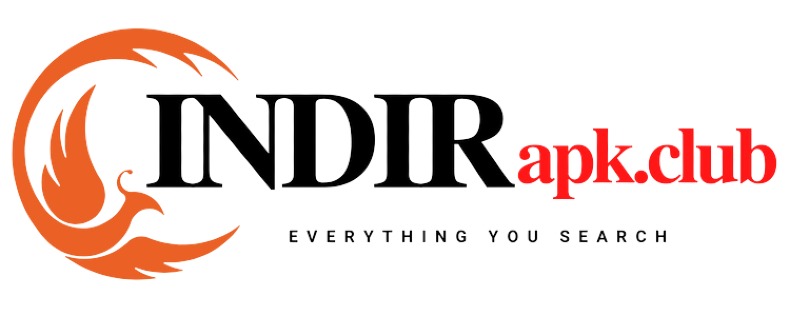Introduction
In recent years, the term “cloud technology” has become a ubiquitous buzzword in the world of technology and business. It’s often associated with everything from data storage to software applications and even artificial intelligence. But what exactly is cloud technology, and how does it work? In this comprehensive guide, we’ll demystify cloud technology, exploring its definition, its evolution, key components, benefits, and potential challenges.
Definition
Cloud technology, often referred to as “the cloud,” is a broad term that encompasses a range of services, technologies, and infrastructure hosted and delivered over the internet. It allows users to access and utilize various computing resources, such as servers, storage, databases, networking, software, and analytics, without the need for local, on-premises infrastructure.
Core Characteristics
- On-Demand Self-Service: Users can provision and manage resources as needed, without requiring human intervention from the service provider.
- Broad Network Access: Cloud services are accessible over the internet from a variety of devices and platforms.
- Resource Pooling: Resources are shared among multiple users, allowing for cost-efficiency and optimization.
- Rapid Elasticity: Services can be quickly scaled up or down to meet changing demands.
- Measured Service: Cloud resources are metered, and users are billed based on their actual usage.
The Evolution of Cloud Technology

Mainframes and Early Computers
In the early days of computing, all processing and data storage occurred on massive mainframe computers, requiring users to have direct access to these centralized systems.
Client-Server Computing
With the advent of personal computers, client-server computing emerged, where processing power was distributed between local client devices and centralized servers.
Virtualization
Virtualization technologies allowed multiple virtual servers to run on a single physical server, improving resource utilization and management.
The Emergence of Cloud
Cloud technology began to take shape in the 2000s with the proliferation of data centers and the development of virtualization and networking technologies that facilitated remote access to computing resources via the internet.
Key Components of Cloud Technology
Cloud Service Models
Infrastructure as a Service (IaaS)
- Provides virtualized computing resources, including servers, storage, and networking.
- Offers the most flexibility for users who manage their applications and data.
Platform as a Service (PaaS)
- Offers a platform for developers to build, deploy, and manage applications without worrying about underlying infrastructure.
- Ideal for software development and deployment.
Software as a Service (SaaS)
- Delivers software applications over the internet, accessible through a web browser without local installation.
- Examples include Gmail, Salesforce, and Microsoft 365.
Cloud Deployment Models
Public Cloud
- Services are hosted by a third-party cloud provider and made available to the general public.
- Offers cost savings, scalability, and reduced IT management responsibilities.
Private Cloud
- Resources are dedicated to a single organization, either on-premises or hosted by a third party.
- Provides greater control and customization but may require higher initial investments.
Hybrid Cloud
- Combines both public and private cloud infrastructure, allowing data and applications to be shared between them.
- Ideal for organizations with varying needs for security, compliance, and flexibility.
Benefits of Cloud Technology
Scalability
- Cloud resources can be easily scaled up or down to meet changing demands, avoiding the need for costly hardware upgrades.
Cost-Efficiency
- Organizations can reduce capital expenses on hardware and maintenance, paying only for the resources they consume.
Accessibility
- Cloud services are accessible from anywhere with an internet connection, promoting remote work and collaboration.
Reliability
- Leading cloud providers offer high availability and redundancy, minimizing downtime and data loss.
Security
- Cloud providers invest heavily in security measures, often surpassing the capabilities of individual organizations.
Flexibility
- Cloud technology supports a wide range of applications, from simple data storage to complex machine learning and artificial intelligence tasks.
Challenges and Considerations
Data Security
- Storing data in the cloud may raise concerns about data privacy and security, especially for sensitive or regulated information.
Connectivity
- Dependence on internet connectivity can be a limiting factor for organizations in remote or underdeveloped areas.
Cost Management
- Without careful monitoring, cloud costs can spiral out of control. Effective cost management is crucial to staying within budget.
Vendor Lock-In
- Migrating away from a specific cloud provider can be complex and costly due to proprietary technologies and data formats.
Cloud technology has revolutionized the way organizations and individuals access and utilize computing resources. It offers scalability, cost-efficiency, and flexibility that were once unimaginable. Understanding its components, benefits, and challenges is essential for making informed decisions regarding its adoption. As technology continues to evolve, the cloud is likely to play an even more prominent role in our digital lives and the future of businesses.


i just wanted to drop a note of appreciation for your blog post. it’s evident that you’ve done your research, and the effort you put into it is commendable. thank you for enriching our knowledge..
I simply could not go away your web site prior to suggesting that I really enjoyed the standard info a person supply on your guests Is going to be back incessantly to investigate crosscheck new posts
Your posts always provide me with a new perspective and encourage me to look at things differently Thank you for broadening my horizons
Your posts always provide me with a new perspective and encourage me to look at things differently Thank you for broadening my horizons
Your blog post was fantastic, thanks for the great content!
Your writing is so eloquent and heartfelt It’s impossible not to be moved by your words Thank you for sharing your gift with the world
I have been struggling with this issue for a while and your post has provided me with much-needed guidance and clarity Thank you so much
buying prescription drugs in mexico online: Online Pharmacies in Mexico – purple pharmacy mexico price list
indian pharmacy online http://indiaph24.store/# best india pharmacy
buy medicines online in india
mexican rx online: mexican pharmacy – mexican drugstore online
online pharmacy india https://indiaph24.store/# indian pharmacy online
world pharmacy india
buying from online mexican pharmacy cheapest mexico drugs buying prescription drugs in mexico online
http://nolvadex.life/# tamoxifen and grapefruit
http://nolvadex.life/# tamoxifen buy
buy cytotec over the counter: buy cytotec online fast delivery – cytotec pills online
http://lisinopril.network/# lisinopril pharmacy online
get generic propecia pill cost of propecia pills get generic propecia without dr prescription
buy cytotec online: buy cytotec pills online cheap – buy cytotec over the counter
https://ciprofloxacin.tech/# ciprofloxacin
ciprofloxacin order online antibiotics cipro cipro
https://cytotec.club/# buy cytotec
generic propecia tablets: cost propecia tablets – order cheap propecia without prescription
buy misoprostol over the counter buy cytotec in usa purchase cytotec
https://finasteride.store/# generic propecia without prescription
buy ciprofloxacin over the counter: where can i buy cipro online – buy cipro online canada
ciprofloxacin generic price buy ciprofloxacin over the counter antibiotics cipro
https://lisinopril.network/# lisinopril buy without prescription
https://nolvadex.life/# tamoxifen headache
lisinopril 30 mg 16 lisinopril lisinopril 15mg
tamoxifen endometrium: tamoxifen citrate – tamoxifen effectiveness
https://cytotec.club/# buy cytotec
buy cytotec over the counter buy misoprostol over the counter order cytotec online
Abortion pills online: purchase cytotec – buy misoprostol over the counter
http://lisinopril.network/# where to buy lisinopril 2.5 mg
buy generic propecia without insurance cost generic propecia price buying propecia no prescription
cytotec abortion pill: buy cytotec online – cytotec pills buy online
http://lisinopril.network/# zestril medicine
https://ciprofloxacin.tech/# ciprofloxacin 500mg buy online